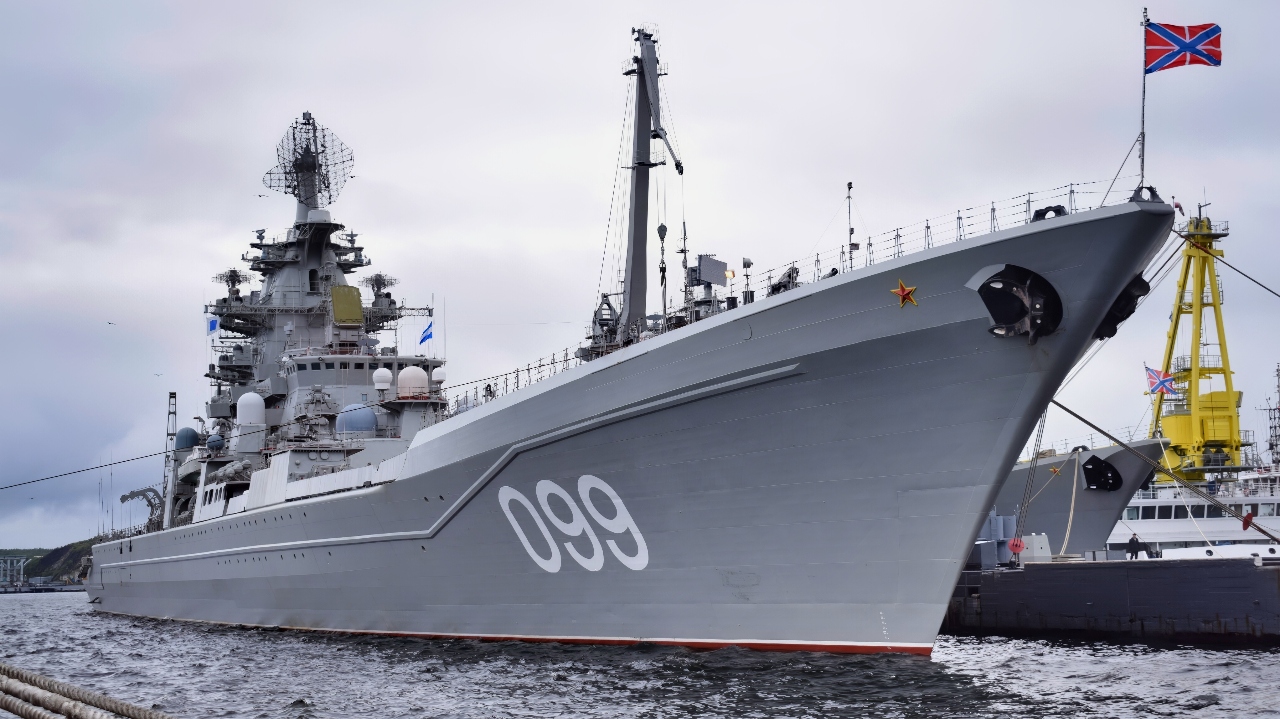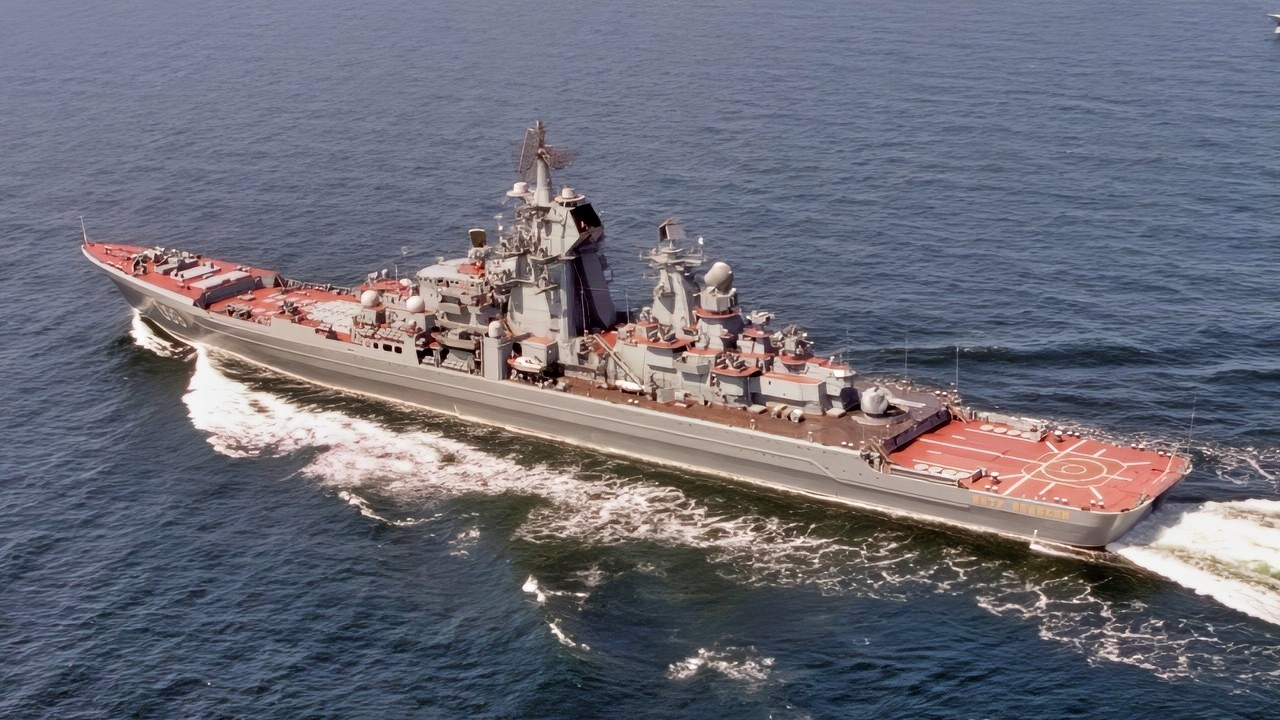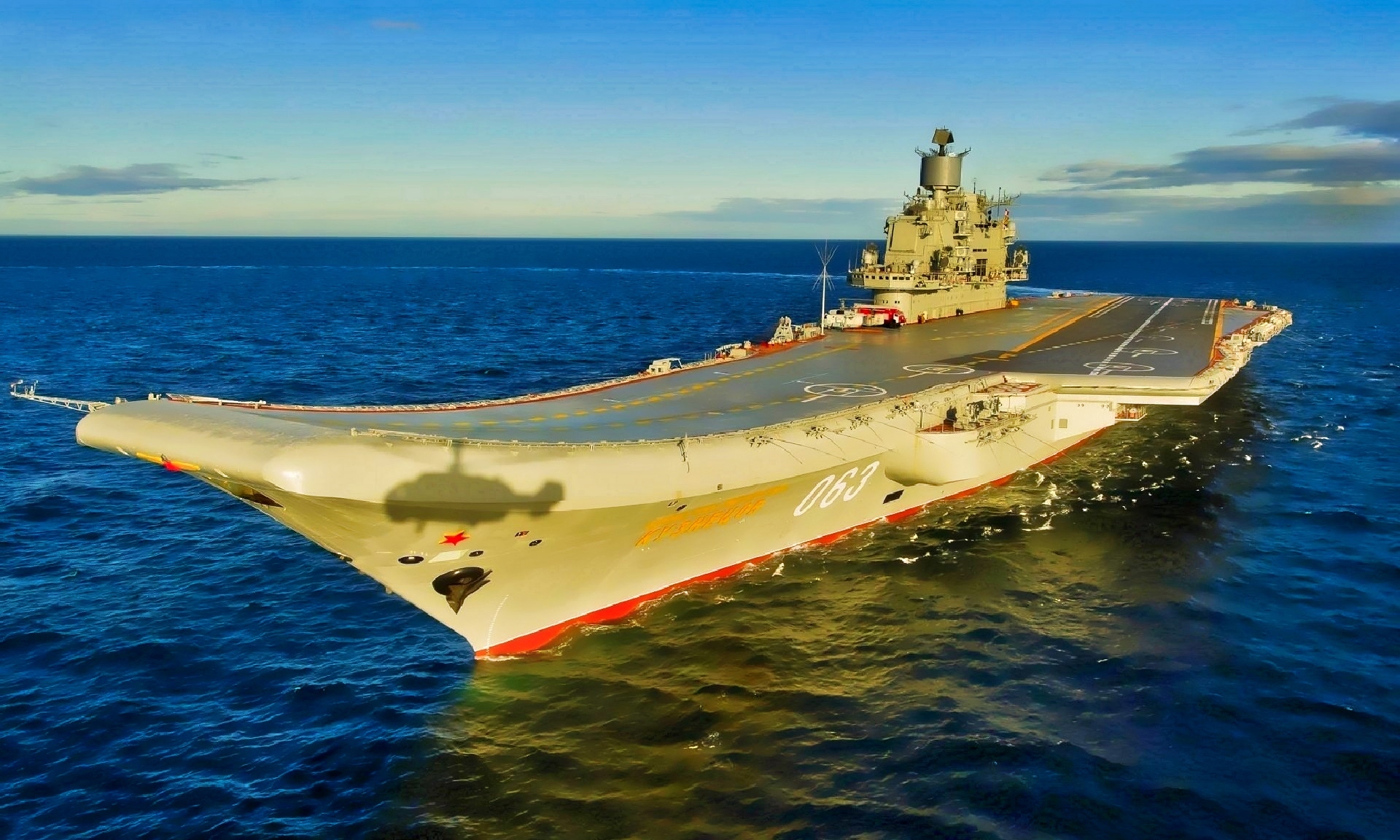Key Points and Summary – Ukraine spotlighted Russia’s naval weaknesses—aging surface combatants, a crippled carrier, constrained access—but also its likely path forward.
-Instead of chasing blue-water prestige, Moscow is doubling down on what works: hypersonic-armed frigates/corvettes for regional strike, Arctic infrastructure, and above all nuclear submarines. Zircon offers a potential long-range anti-ship punch, though its real effectiveness is still uncertain.

Kirov-Class Russian Navy Cleaned Up. Image Credit: Creative Commons.
-The Borei SSBN fleet, by contrast, is proven and expanding, providing survivable nuclear deterrence that remains NATO’s biggest naval concern.
-Expect a missile-centric, submarine-led force built for coercion on Russia’s periphery and global signaling—less glamorous than a carrier navy, but still strategically dangerous.
The Russian Navy: Just How Powerful Does It Need to Be?
The last couple of years have not been too kind to the Russian Navy. The war in Ukraine has revealed many glaring weaknesses with the Navy’s naval defenses, Russia’s only aircraft carrier is on the verge of being scrapped, and its warm water port in Tartus, Syria, is more or less closed down.
All of this has done tremendous damage to Russia’s military prestige.

Russian Navy Kirov-Class. Image Credit: Creative Commons.
Many analysts have speculated that Russia is on the verge of losing its blue water naval capabilities.
While I personally would not go that far, the Russian Navy has some challenging hurdles to overcome if it wants to remain a relevant Naval power.
How Did Russia Get to this Point?
Russia’s naval decline did not start with Ukraine.
More accurately, the war in Ukraine revealed the precarious state of the Russian Navy to the rest of the world.
Russia’s naval woes began the moment that the Soviet Union collapsed.
The Russian Federation inherited the vast majority of the Soviet Navy’s vessels, including its Nuclear Submarines, heavy destroyers, and, of course, the accident-prone Admiral Kuznetsov aircraft carrier.

Sukhoi Su-33 launching from the Admiral Kuznetsov.

Admiral Kuznetsov Aircraft Carrier. Image Credit: Creative Commons.
The fall of the USSR also meant that the Russians lost several key facilities in the Baltic and abroad.
More significantly, following the collapse of the Soviet Union, the Russian economy experienced a severe decline.
Defense spending across the board also decreased radically. The newly formed Russian Federation inherited a Soviet Navy with fewer places to put its ships and less than a tenth of the funds necessary to maintain or replace these aging vessels.
Naturally, after the end of the Cold War, the Russian Navy experienced a significant decline. Many ships were mothballed or scrapped, and many projects in development were put on hold indefinitely.
The Russians Have Always Neglected Their Navy
I want to make one thing explicitly clear: even since the Soviet times, the Navy has always been a secondary priority to the Russians.
Russia’s enemies have historically never been too far across the border, which is to say, its enemies come by land, not by sea.
Based on Russia’s geography, it has always made more sense to invest more in the Army or the Air Force rather than the Navy.
Unlike the U.S., Russia does not need to cross vast oceans; it simply needs to cross the continent.
The vast majority of Russia’s ocean access is in the frozen polar regions, making them unsuitable for military use. However, with the Baltics and Finland in NATO, Russia’s access to the Baltic Sea is more precarious than it has ever been.
This has forced the Russians to turn elsewhere for trade and transit, mainly to their frozen regions. Russia has been steadily increasing its presence in the Arctic for some time.
It possesses a fleet of eleven icebreakers, eight of which are nuclear powered, and has been steadily increasing that number.
Hypersonic Missiles: Game Changer or a Passing Fad?
Rather than giving up its naval ambitions, Putin seems to be set on restoring the Russian Navy to a semblance of its former glory, but how can Russia do this?
Aside from a few modernization projects, most of its new surface ships have been corvettes so how can Russia hope to produce a Navy capable of challenging NATO? The answer is with hypersonic missiles.

Admiral Kuznetsov Aircraft Carrier from Russia. Image Credit: Creative Commons.
Russia has been working diligently to integrate its arsenal of hypersonic missiles into its navy, and it has made significant progress as of late.
The Zircon hypersonic missile has so far been the centerpiece of Russia’s new naval arsenal. With a range of around 1000km and a speed of Mach 9, this scramjet-powered cruise missile is, at least on paper, nearly impossible to intercept with existing air defense systems.
It has been integrated into several naval vessels in the Russian Navy, most notably with the Admiral Nakhimov battlecruiser, which possesses eighty tubes capable of launching the missile. The Zircon is also the primary armament of the Project 22350 (also known as the Admiral Gorshkov-class) frigates, which are equipped with as many as thirty-two launch cells capable of launching hypersonic missiles.
Hypersonic missiles are often described as “carrier killers.” The idea is that one or more well-placed missiles on an aircraft carrier’s flight deck effectively render it combat ineffective. This is a significant concern to the United States, as hypersonic missiles are, again on paper, impossible to intercept.
However, it remains to be seen whether the Zircon is everything the Russians claim it to be.
The missile has only been used once in Ukraine, and Ukrainian media reported that both missiles were intercepted (which I personally do not buy). Insufficient information is available about the Zircon to definitively determine whether they are the game-changers Moscow claims they are.
Nuclear Submarines: The Real Strength of the Russian Navy
As interesting as its hypersonic missiles are, the real teeth of the Russian Navy lie with its nuclear-powered submarines. While Russia has consistently struggled to make deliveries of many other military systems, it has been silently increasing its inventory of SSBNs. The Borei-class submarines are their main and most deadly. Russia currently operates eight of these submarines with a total of fourteen planned by 2031. These submarines carry 16 RSM-56 intercontinental range ballistic missiles (ICBM), each of which can deliver up to ten nuclear warheads against separate targets, which totals around 160 nukes per sub.
Russian submarines have been and always will be the most critical assets to the Russian Navy, and the most dangerous threats to NATO.
One salvo from the Borei-class alone has the potential to wipe the largest and most populated cities in the U.S. off the map altogether.
Russian submarines are also incredibly stealthy, making them difficult to detect and track. In Russia’s eyes, an aircraft carrier is a potent symbol of power, but it is ultimately just that – symbolic. The strategic value offered by nuclear submarines is unparalleled.
About the Author: Isaac Seitz
Isaac Seitz, a Defense Columnist, graduated from Patrick Henry College’s Strategic Intelligence and National Security program. He has also studied Russian at Middlebury Language Schools and has worked as an intelligence Analyst in the private sector.
More Military
Canada Is ‘Full Steam Ahead’ on F-35 Stealth Fighter
Why Does Turkey Have So Many Main Battle Tanks?
‘Cracked Barrels’: The U.S. Navy’s Big Railgun Failure Explained in Just 2 Sad Words
‘Had No Chance’: The Montana-Class Was the 71,000-Ton Battleship Destined to Fail
‘Captain, We Smacked It Another Submarine’: British and French Nuclear Missile Subs Collided










